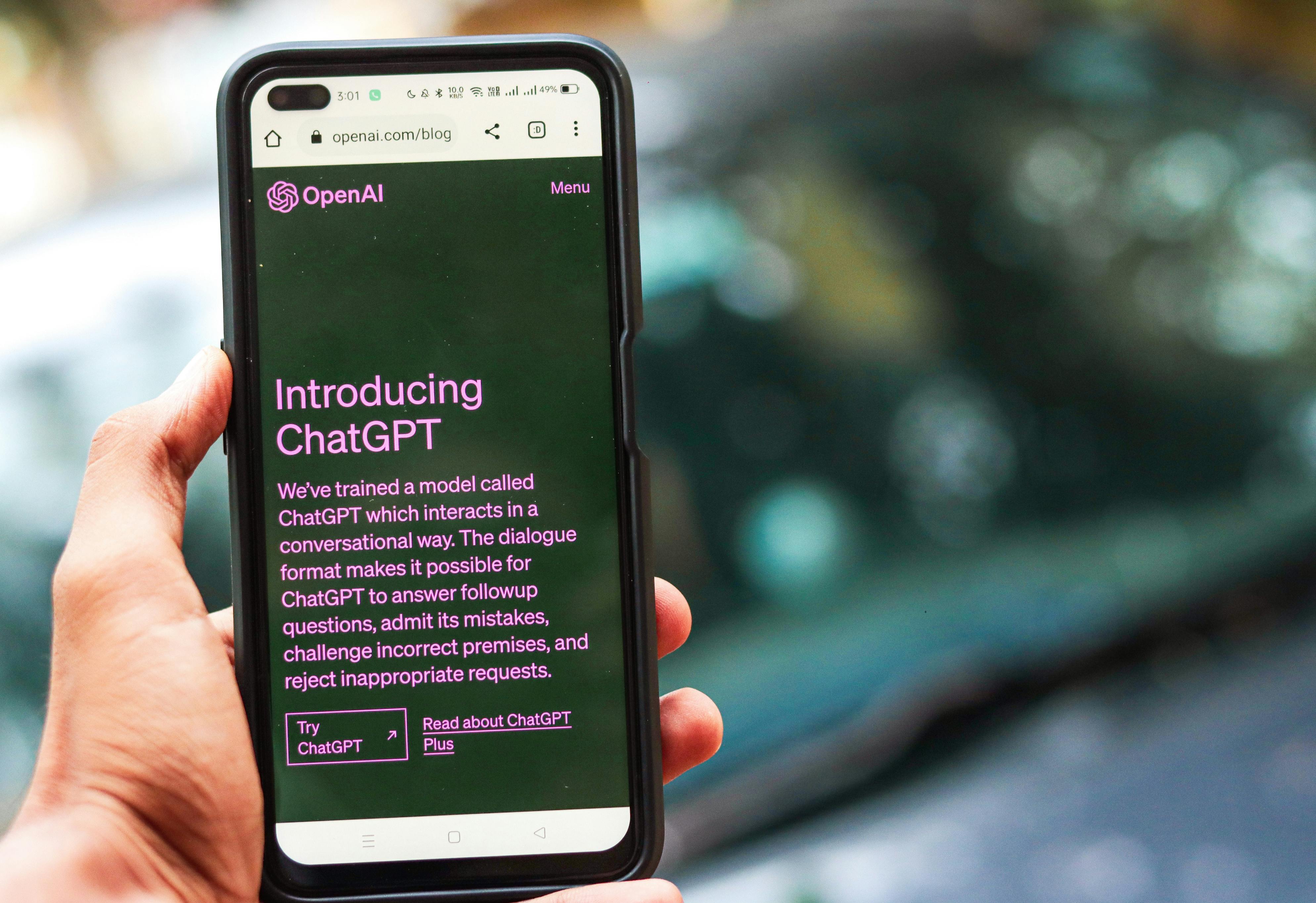
Unveiling the Traffic Bot: Exploring Its Benefits and Pros and Cons
Traffic bots have become a prevalent topic of discussion in the digital world, especially for website owners, marketers, and SEO professionals. These automated software programs are designed to mimic human web browsing activity, simulating website visits, clicks on links, and other actions. In this introduction, we will delve into the realm of traffic bots, shedding light on their purpose, characteristics, and impact on the online ecosystem.
When discussing traffic bots, it’s important to highlight that there are both legitimate and malicious uses of this technology. On one hand, traffic bots serve practical purposes such as testing website performance, monitoring analytics data, or gauging user experience. These benign bots are created by reputable organizations to gather valuable insights and improve digital presence.
On the other hand, malicious actors exploit traffic bots with the intent to deceive, manipulate rankings, or generate fake engagement statistics. By deploying bad bots in large numbers, fraudsters aim to boost website metrics artificially and deceive advertisers or clients about their online reach. Such unethical practices not only compromise the integrity of web analytics but can also damage a website's reputation.
It is crucial for website owners and marketers to differentiate between good and bad traffic bots. Understanding the motivations behind these automated programs can help identify suspicious patterns or activities that may be detrimental to organic growth or ad ROI. Regularly monitoring web traffic sources and user behavior can be instrumental in distinguishing between genuine visitors and bot-generated interactions.
Traffic bot detection techniques have evolved over time to combat fake traffic effectively. Analytics tools have improved their ability to filter out illegitimate traffic through advanced algorithms that learn from historical data and employ heuristics to differentiate between real users and bots. Protective measures like CAPTCHA codes or IP blocking can also be employed to authenticate human interaction further.
Moreover, sophisticated traffic bots equipped with machine learning capabilities have emerged. These advanced bots can simulate human-like behavior by analyzing patterns from real users and imitating their browsing habits accurately. Consequently, it has become increasingly challenging to detect bots that expertly mimic genuine user interactions.
In conclusion, traffic bots have the potential to serve beneficial purposes for website owners and marketers, but they can also be abused for deceptive practices. Keeping oneself informed about the growing realm of traffic bots is imperative in navigating the intricate digital landscape. By comprehending their nature, along with the means to identify and counteract them, individuals can safeguard themselves and ensure a fair and authentic online environment for businesses and users alike.
 Different Types of Traffic Bots: From benign to malicioustraffic bots are automated programs designed to simulate human behavior and interact with websites or online platforms by generating traffic. These bots can vary significantly in their purpose, intent, and impact, ranging from benign to malicious. Here are various types of traffic bots commonly encountered:
Different Types of Traffic Bots: From benign to malicioustraffic bots are automated programs designed to simulate human behavior and interact with websites or online platforms by generating traffic. These bots can vary significantly in their purpose, intent, and impact, ranging from benign to malicious. Here are various types of traffic bots commonly encountered:Benign Bots:
- Search Engine Crawlers: These bots, employed by search engines like Google, navigate websites to index pages and gather information for search results.
- RSS Feed Aggregators: Often utilized by news portals or blog directories, these bots periodically fetch new content from websites' RSS feeds to populate their platforms.
- Social Media Bots: Some social media networks employ bots responsible for fetching data, monitoring engagement metrics, or providing customer support to users.
Analytical Bots:
- Analytics tools may use bots to gather data concerning website performance, visitor demographics, or user behavior. This information helps website owners optimize their platforms accordingly.
Monitoring Bots:
- Website Monitoring Services: These bots monitor website uptime and availability, alerting website administrators when the site experiences an outage or downtime on specified pages.
- Security Botnets: Researchers often deploy benign botnets to scan websites automatically, searching for security vulnerabilities. Such attempts assist in highlighting potential areas of improvement.
Content Bandwidth Saving Bots:
- Compression Proxies: Bots providing web optimization services reduce file sizes through compression and cache implementation. They help save bandwidth and improve website loading speeds.
Ad Fraud Bots:
- Ad Clickers/Viewers: These malicious bots fraudulently generate clicks or views on online advertisements, deceiving advertisers and distorting the integrity of ad campaign metrics.
DDoS Attack Bots:
- Botnets involved in Distributed Denial of Service (DDoS) attacks are destructive in nature. These centralized control systems direct several computers (zombie computers) infected with malware to flood target servers with massive volumes of requests ultimately causing a service disruption.
Impersonator Bots:
- Web scraping bots may impersonate legitimate users to gather data from websites without permission, posing challenges for content creators trying to protect their intellectual property.
Spambots:
- These bots overload comments sections or forums with unsolicited advertisements, scams, or other unwanted messages, hampering meaningful discussions and potentially hosting malicious links.
Malware Distribution Bots:
- Some bots carry malicious payloads intending to distribute malware. They exploit vulnerabilities in websites' security systems to deliver malware downloads automatically.
Understanding the different types of traffic bots is crucial as it allows website owners and security professionals to recognize and mitigate potential risks and impacts associated with these automated programs.
 How Traffic Bots Can Influence Your Website's AnalyticsUsing traffic bots can have a significant impact on your website's analytics, both positive and negative. These software programs are designed to automate visits to your site by generating artificial traffic. While some traffic bots serve legitimate purposes such as testing website performance or analyzing ad placement, others are created solely to manipulate analytics data in various ways. Here are some ways in which traffic bots may influence your website's analytics:
How Traffic Bots Can Influence Your Website's AnalyticsUsing traffic bots can have a significant impact on your website's analytics, both positive and negative. These software programs are designed to automate visits to your site by generating artificial traffic. While some traffic bots serve legitimate purposes such as testing website performance or analyzing ad placement, others are created solely to manipulate analytics data in various ways. Here are some ways in which traffic bots may influence your website's analytics:1. Inflating web traffic: Traffic bots can artificially inflate the number of visitors to your site by repeatedly making visits at a rapid pace. This influx of fake traffic inflates your website's overall visitor count, giving you a distorted view of actual user engagement.
2. Skewing engagement metrics: Bots can simulate user behavior like clicks, page views, and time spent on your site. As a result, engagement metrics such as average session duration or page per session can be inaccurately increased, making it harder to gauge actual user interest and behavior.
3. Deceptive bounce rates: By randomly visiting different pages on your site without any intent or purpose, traffic bots can trick analytics tools into reporting lower bounce rates than what they truly are. False positives could lead to inaccurate assessments of the quality and relevance of your content.
4. Impacted conversion rates: Conversion rate measurements can also be skewed by traffic bots since they might simulate conversions without any real intent to make a purchase or take meaningful action. This inaccurate data may hinder your ability to assess marketing effectiveness or identify areas for improvement.
5. Geographic and demographic inaccuracies: Traffic generated by bots is often not representative of genuine human users. As a result, analytical reports might incorrectly reflect user demographics and geographic distribution, making it difficult for accurate targeting or resource allocation decisions.
6. Disturbed referral data: Traffic bots may disrupt referral data by portraying false sources of traffic when reported by analytics tools. This misinformation can misguide you in identifying the best referral sources and external campaigns that drive the most valuable traffic to your site.
It is important to note that not all traffic bots are malicious or deceptive. Some may benefit your website by assisting with load testing, improving SEO optimization, or automating mundane tasks. However, monitoring and filtering traffic sources is crucial to ensure accurate analytics data and obtain reliable insights about your website's performance.
 The Dual Nature of Traffic Bots: SEO Friend or Foe?traffic bots have become increasingly popular in the world of search engine optimization (SEO) as they promise to drive more traffic to your website, consequently boosting your online visibility and potentially increasing your revenue. However, the essential question remains: are these traffic bots actually valuable allies in your SEO efforts, or are they problematic foes that should be avoided?
The Dual Nature of Traffic Bots: SEO Friend or Foe?traffic bots have become increasingly popular in the world of search engine optimization (SEO) as they promise to drive more traffic to your website, consequently boosting your online visibility and potentially increasing your revenue. However, the essential question remains: are these traffic bots actually valuable allies in your SEO efforts, or are they problematic foes that should be avoided?On one hand, traffic bots can be seen as a beneficial tool for improving SEO. They offer the potential to increase the number of visits to your website, which may lead search engines to perceive it as more popular and relevant. This impression of popularity might result in higher organic search rankings, ultimately attracting even more genuine visitors. Traffic bots can simulate human behavior, clicking on links, exploring different pages, and spending time on your site. When search engines notice prolonged engagement or an increase in click-through rates, they could reward your website by ranking it more favorably.
Marketers argue that traffic bots can be highly advantageous when used carefully, offering advantages such as reduced bounce rates and enhanced user metrics. Higher engagement signals improved user experience, and this kind of traffic might attract potential advertisers, further benefiting your revenue stream. Additionally, bot-driven traffic can help test and optimize website designs, improving performance and functionality over time.
However, despite their seemingly positive attributes, traffic bots can also pose significant issues for your SEO strategy. As search engines become smarter, they are getting better at detecting illegitimate sources of traffic and behavior. If detected engaging false click-throughs or other dishonest practices associated with bot-generated traffic, search engines may penalize your website. Penalizations can cause a drop in rankings or even total removal from search results. Moreover, if your entire SEO strategy depends mainly on bot-generated traffic rather than genuine users who convert and engage with your content or products, you risk creating misleading key performance indicators (KPIs). Consequently, your understanding of real user behavior could be skewed and harm important decisions concerning user experience and optimization.
Additionally, fraudulent traffic generated by bots often leads to inflated advertising costs, especially if advertising campaigns rely on the number of clicks received. Bots can artificially increase click numbers without any real impact on conversion rates. This issue can impede budget allocation for marketing strategies and deny opportunities for genuine growth.
Ultimately, whether traffic bots prove to be SEO friends or foes largely depends on how they are used. If employed wisely and ethically, they can be effective tools to assist in improving website visibility, enhancing user metrics, and even enabling design testing. However, if misused or relied upon exclusively, they can harm your SEO efforts by diminishing search engine trust, undermining data reliability, risking penalizations, and straining your marketing budget with inflated advertising costs. Proper understanding of optimal bot usage within your overall SEO strategy is essential to avoid potential pitfalls while reaping the perceived benefits that traffic bots offer.
 The Pros and Cons of Using Traffic Bots for Web Testingtraffic bots can be highly advantageous when it comes to web testing, but it is important to weigh their pros and cons before implementing them. Here are some points to consider:
The Pros and Cons of Using Traffic Bots for Web Testingtraffic bots can be highly advantageous when it comes to web testing, but it is important to weigh their pros and cons before implementing them. Here are some points to consider:Pros:
1. Increased Efficiency: Traffic bots can simulate real user behavior and generate large volumes of traffic within a short period without the need for manual intervention. This automation significantly speeds up the testing process.
2. Cost-effective: Using traffic bots can save money as they eliminate the need for human resources required to perform repetitive tasks such as repeatedly accessing websites or filling out forms. Companies can optimize their testing budget by automating these processes.
3. Scalability: Traffic bots make it possible to test websites or applications with a large number of simultaneous users, which would be time-consuming and resource-intensive if done manually. They allow testers to evaluate performance under high load conditions, providing valuable insights.
4. Realistic Testing: These bots can mimic various browsing scenarios and user actions accurately, ensuring realistic testing results. They help identify potential issues, such as broken links, slow-loading pages, or error messages that real users might encounter.
5. Regression Testing: Traffic bots assist in verifying if updates, changes, or fixes implemented have caused any unintended side effects or regressions. By automating repetitive tasks, they perform thorough regression testing quicker than manual testing.
Cons:
1. Lack of Human Judgment: Traffic bot frameworks follow predefined scripts and scenarios, limiting their ability to carry out exploratory testing or take into account unpredictable user behavior. They might overlook errors that a human tester could identify by thinking outside the box.
2. Limited Applicability: Not all aspects of web testing can be effectively performed by traffic bots alone. While they are excellent for load testing or stress testing, other types of testing like usability testing, compatibility testing, or accessibility testing require human interaction and perception.
3. Cost of Development and Maintenance: Creating traffic bot tools entails initial development costs and ongoing maintenance efforts. Any updates to the website or underlying infrastructure may require corresponding changes to these tools, adding to the overall investment.
4. False Positives or Negatives: Since traffic bots rely on predefined script execution, some issues might not be detected accurately. False positives and negatives can occur due to interactions unique to individual users, cookies, caching, or personalized settings that a bot cannot accurately replicate.
5. Legal and Ethical Considerations: The excessive use of traffic bots may contradict website terms of use or violate legal regulations if not used responsibly. Bots generating excessive traffic can strain server resources, impact user experience, or be seen as unethical behavior by the site owners.
In conclusion, while traffic bots offer numerous advantages like increased efficiency and scalability in web testing, understanding their limitations and potential drawbacks is crucial when determining their optimal usage to complement human testing efforts effectively.
 A Deep Dive into the Functionality of Advanced Traffic Botstraffic bots are advanced computer programs designed to mimic human behavior and generate traffic to websites, applications, or other online platforms. These bots use various techniques to drive traffic, simulate user interactions, and manipulate website analytics. This blog post will provide a deep dive into the functionality of these advanced traffic bots.
A Deep Dive into the Functionality of Advanced Traffic Botstraffic bots are advanced computer programs designed to mimic human behavior and generate traffic to websites, applications, or other online platforms. These bots use various techniques to drive traffic, simulate user interactions, and manipulate website analytics. This blog post will provide a deep dive into the functionality of these advanced traffic bots.Advanced traffic bots are capable of performing multiple tasks simultaneously, emulating human behavior to fool detection systems and appear as genuine users. They can disguise their IP addresses, alter user-agents, and manipulate header information to mimic different devices and browsers.
One prominent technique utilized by traffic bots is the generation of fake referrals. By simulating traffic from legitimate websites, these bots can convincingly redirect users to the target site. This falsifies referral sources in online analytics tools, making it harder for website owners to identify which webpages are genuinely driving traffic.
Additionally, advanced traffic bots are often equipped with the ability to perform automated form submissions. They can fill out online forms, surveys, or even proceed through checkout processes on e-commerce platforms. The purpose behind this is to make it seem as if genuine users are providing valuable information, boosting data quality statistics for targeted websites.
Another mechanism employed by traffic bots is the manipulation of browsing patterns. These bots can navigate through multiple pages on a website, fill cart functionalities, click on relevant links or images—creating an impression of genuine user engagement. By doing so, they can artificially inflate page views and session duration metrics.
Furthermore, advanced traffic bots have the capability to interact with dynamic content. They can comment on blogs or forums using pre-generated scripts or AI-generated text. Such interactions may seem authentic but are merely part of the orchestrated plan to simulate engagement and activity within an online community.
In order to bypass security measures against bot detection, these programs often utilize sophisticated techniques. For example, they might employ distributed proxy networks or rotate IP addresses to avoid IP bans or blocks commonly implemented by websites. Additionally, they can mimic human behavior in terms of mouse movements, click patterns, and even time intervals between actions.
The use of advanced traffic bots raises ethical concerns. They can artificially influence website statistics, mislead advertisers by delivering false impressions or ad clicks, and disrupt fair competition online. Furthermore, repeated bot traffic can overload servers and cause performance issues.
To combat these threats, web developers and researchers employ various countermeasures such as detection algorithms to identify abnormal traffic patterns, blacklisting suspicious IP addresses, and implementing CAPTCHA mechanisms.
In conclusion, advanced traffic bots have become increasingly sophisticated in replicating human behavior and evading detection. They can generate fake referrals, manipulate browsing patterns, engage with dynamic content, and perform automated form submissions. These tactics deceive analytics tools, make fraudulent activity harder to detect, and pose numerous challenges for website owners and marketers.
 Ethical Considerations in Using Traffic BotsUsing traffic bots can be beneficial for businesses looking to boost their online presence and generate more traffic to their websites. However, it's crucial to consider and address certain ethical concerns associated with using traffic bots. Here are some important points to understand:
Ethical Considerations in Using Traffic BotsUsing traffic bots can be beneficial for businesses looking to boost their online presence and generate more traffic to their websites. However, it's crucial to consider and address certain ethical concerns associated with using traffic bots. Here are some important points to understand:1. Transparency: It is essential to clearly disclose the use of traffic bots on your website, ensuring visitors are aware that they might encounter automated interactions.
2. Deceptive Practices: Traffic bots should never engage in deceptive activities, such as fake clicks, false advertisement interactions, or artificially inflating engagement metrics. Such practices are dishonest and can negatively impact both users and the wider online ecosystem.
3. Targeting Legitimate Users: Ensure that traffic bots are programmed not to engage with real users or legitimate sites inappropriately. Bot activities should be confined to generating automated traffic rather than interacting with genuine users or impacting their experiences unfairly.
4. Respect User Privacy: Traffic bots should always respect user privacy by adhering to relevant data protection regulations and opting for anonymized behaviors whenever possible. Avoid collecting or misusing personal information without explicit consent.
5. Avoiding Impact on Competitors: Ethical considerations require responsible usage of traffic bots, aiming to enhance your own visibility without intentionally swarming competitor websites with artificial traffic or engaging in malicious actions.
6. Ad Policies Compliance: When using traffic bots to interact with online advertisements, ensure adherence to advertising platform policies and guidelines. Violating these guidelines can harm both the reputation of your business and those hosting the ads.
7. Caution against Pubic Resources Usage: Traffic bot operations should not exploit public resources like open Wi-Fi connections, public computers, or other networks without proper permission from relevant authorities or owners.
8. Preventing Operational Disturbances: Traffic bots should be programmed intelligently to avoid disrupting website functionalities, hindering user experiences, or overloading servers with excessive requests that can harm site performance.
9. Regular Auditing and Monitoring: Continuously evaluate and review the performance and outcomes of traffic bots to detect any potential ethical concerns. Promptly resolve any issues identified during auditing or monitoring processes.
10. Legal Considerations: Always ensure that your use of traffic bots complies with local laws, regulations, and industry standards specific to your jurisdiction.
By seriously taking into account these ethical considerations in using traffic bots, businesses can act responsibly and maintain a positive online presence without compromising the integrity of the digital ecosystem or causing harm to users, competitors, or themselves.
 Protecting Your Site: Detecting and Blocking Malicious Traffic BotsWhen it comes to running a website or an online business, one of the major concerns is dealing with malicious traffic bots. These automated programs are designed to flood your site with fake visits, consume resources, steal data, and even negatively impact your site's analytics. However, by taking certain protective measures, you can effectively detect and block these malicious traffic bots. Here are some important aspects to consider:
Protecting Your Site: Detecting and Blocking Malicious Traffic BotsWhen it comes to running a website or an online business, one of the major concerns is dealing with malicious traffic bots. These automated programs are designed to flood your site with fake visits, consume resources, steal data, and even negatively impact your site's analytics. However, by taking certain protective measures, you can effectively detect and block these malicious traffic bots. Here are some important aspects to consider:Understanding bot traffic:
Traffic bots are automated programs that crawl websites for various purposes. While some bots are legitimate, such as search engine crawlers or content aggregators, others pose a threat as they have malicious intent. Malicious traffic bots can engage in activities like scraping website content, launching DDoS attacks or fraudulent activities, while faking human-like browsing behaviors.
Bot detection techniques:
To protect your site from harmful bot traffic, deploying effective bot detection techniques becomes crucial. You can employ various methods to identify and differentiate between legitimate and malicious bots. Setting up a robust monitoring system that tracks abnormal request patterns is one such technique. This involves analyzing factors like request frequency, geolocation of IP addresses, user agent strings, and referral sources along with other indicators to identify suspicious activities.
Using CAPTCHAs and Puzzle-based authentication:
Implementing CAPTCHAs (Completely Automated Public Turing tests to tell Computers and Humans Apart) or other puzzle-based authentication mechanisms on sensitive forms or login pages greatly helps in preventing bot attacks. These tools challenge the user to complete a task that a bot might find difficult, effectively differentiating between human users and automated scripts.
HTTP Security Headers:
By utilizing HTTP security headers like the Referrer-Policy, Content-Security-Policy, and Strict-Transport-Security headers, you can minimize potential vulnerabilities that can be exploited by bots. Proper configuration of these headers helps in preventing data leakage, clickjacking attacks, and cross-site scripting attempts.
Using web application firewalls (WAF):
Web Application Firewalls act as a protective layer, sitting between your site and incoming traffic, helping to identify and filter out malicious bot traffic. They accomplish this by analyzing various aspects of the requests, such as request headers, payloads, IP reputation, behavior patterns, and more. Utilizing a well-configured WAF can significantly enhance your site's security against unwanted bots.
Regular log analysis:
Analyzing your server logs at regular intervals allows you to uncover suspicious patterns of activity. By identifying source IP addresses with frequent or unusual requests, unknown user agents or traffic bursts from specific locations, you can effectively detect potential bot traffic sources and block them accordingly.
Blocking suspicious IP addresses and User-Agents:
Utilizing the gathered information from monitoring systems and log analysis, it becomes crucial to block known malicious IP addresses and user-agents using technologies like IP blacklisting and blocking, although it is important to stay vigilant as bots often change these parameters.
Conclusion:
In the battle against malicious traffic bots, protecting your site demands a multi-layered defense strategy. By understanding the nature of bot traffic, deploying effective detection techniques, implementing security headers, using web application firewalls, analyzing logs regularly, and proactively blocking suspicious IPs and user-agents, you can safeguard your site from potential threats and provide a secure browsing experience for your legitimate users.
 Traffic Bots in Digital Marketing: A Hidden Industry?traffic bots in digital marketing refer to automated software programs designed to mimic human traffic on websites. These bots simulate the actions and behaviors of real website visitors, generating a large influx of traffic. This practice is known as bot traffic.
Traffic Bots in Digital Marketing: A Hidden Industry?traffic bots in digital marketing refer to automated software programs designed to mimic human traffic on websites. These bots simulate the actions and behaviors of real website visitors, generating a large influx of traffic. This practice is known as bot traffic.The hidden industry surrounding traffic bots in digital marketing is a significant concern in the online advertising world. Although this technology can be beneficial when used for legitimate reasons, it's often exploited for fraudulent purposes, leading to various issues.
One primary application of traffic bots relates to improving search engine optimization (SEO). Bots are employed to increase website rankings artificially, giving the impression of higher organic traffic and engagement. By doing so, websites potentially gain an advantage over their competitors in search engine results pages (SERPs).
Furthermore, traffic bots are sometimes utilized to enhance social proof by artificially boosting engagement metrics on social media platforms. This can include generating fake likes, shares, comments, and followers. The goal is to make an account or post seem popular and reputable, attracting genuine users in the process.
However, the flourishing undercover market for traffic bots gives rise to numerous concerns. The prevalence of bot-generated traffic undermines the authenticity and credibility of online businesses and advertisers. It results in misleading data analytics, as business owners are unable to determine the actual engagement levels with their websites or social media content.
Additionally, there are economic implications associated with bot traffic. Advertisers might unwittingly spend their budgets on ads that target bot-driven visits rather than real potential customers. This not only wastes resources but also distorts conversion rates and compromises campaign effectiveness.
Moreover, bot-generated traffic contradicts ethical practices essential for maintaining trust in the digital marketing ecosystem. It takes advantage of vulnerable systems and exploits vulnerabilities to manipulate data and deceive advertisers and consumers alike.
To counter these issues, industry professionals utilize various methods to detect bot traffic, such as analyzing IP addresses and identifying suspicious patterns. Additionally, marketers need transparency within different advertising platforms to determine whether they are being exposed to fraudulent bot traffic.
Addressing the hidden industry surrounding bot traffic necessitates ongoing efforts from digital marketing platforms, encouraging higher accountability and raising awareness about the detrimental impact of such practices. Collaborative actions are crucial to mitigate the negative consequences on businesses and restore trust in the digital marketplace.
 The Future of Traffic Generation: AI and Bot EvolutionThe future of traffic bot generation seems to be heavily influenced by the advancements in artificial intelligence (AI) and bot evolution. With AI becoming increasingly sophisticated and bots becoming more intelligent, there are exciting prospects for how they can reshape traffic generation strategies.
The Future of Traffic Generation: AI and Bot EvolutionThe future of traffic bot generation seems to be heavily influenced by the advancements in artificial intelligence (AI) and bot evolution. With AI becoming increasingly sophisticated and bots becoming more intelligent, there are exciting prospects for how they can reshape traffic generation strategies.One significant area where AI and bots can revolutionize traffic generation is through automation. Traditionally, driving traffic to websites has required marketers to manually perform various tasks such as keyword research, content creation, social media management, and search engine optimization. However, with AI and bots, many of these tasks can now be automated, saving time and effort.
AI-powered bots can utilize machine learning algorithms to identify target audiences, analyze user behaviour patterns, and personalize marketing campaigns accordingly. They can automatically generate engaging content, curate relevant articles or videos, respond to user queries, and even handle customer support inquiries. As a result, businesses can reach a larger audience and drive more traffic without having to invest excessive human resources.
Furthermore, AI and bots enable improved user experiences. Chatbots can engage with visitors on websites or social media platforms, guiding them in real-time through the sales funnel and providing immediate assistance. By leveraging natural language processing capabilities, these bots can effectively understand user intent and deliver personalized recommendations, elevating customer satisfaction.
Another profound impact of AI and bot evolution on traffic generation is the ability to make data-driven decisions. These technologies can collect copious amounts of valuable customer data from diverse sources such as website analytics, social media platforms, email campaigns, or even offline interactions. With this information at hand, marketers can gain deeper insights into their target audience's preferences and behaviors. This knowledge allows for more targeted advertising campaigns that better resonate with potential customers, ultimately driving higher quality traffic.
Moreover, the synergy between AI-infused search engines and evolving SEO practices promises a transformation in generating organic traffic. Predictive algorithms powered by AI help deliver more personalized search results based on users' historical information and searches. As a result, search engine optimization efforts need to adapt to AI-driven search engines and identify new patterns and ranking factors to remain effective.
However, with the rise of AI-driven traffic generation, businesses should be cautious of potential challenges. For instance, there is a possibility that automated bots artificially inflate website traffic metrics, leading to skewed data. Moreover, an overreliance on AI and bots can sometimes risk losing the personal touch and human connection that customers desire.
In conclusion, AI and bot evolution hold immense potential for the future of traffic generation. Automation, personalized user experiences, data-driven decision-making, and adapting to AI-infused search engines are key aspects that need to be considered. By understanding these developments and responsibly leveraging AI technologies, businesses can drive sustainable growth through increased web traffic and improved customer engagement.
 Case Studies: How Real Businesses Utilize Traffic BotsCase studies reveal how real businesses benefit from utilizing traffic bots in their operations. These studies highlight various ways in which traffic bots streamline processes, boost engagement, and drive revenue. Here are some key takeaways from these case studies:
Case Studies: How Real Businesses Utilize Traffic BotsCase studies reveal how real businesses benefit from utilizing traffic bots in their operations. These studies highlight various ways in which traffic bots streamline processes, boost engagement, and drive revenue. Here are some key takeaways from these case studies:1. Enhanced Website Traffic: An e-commerce company implemented a traffic bot strategy to increase visitor numbers on their website. The bot optimized search engine visibility by generating organic searches related to the company's niche, resulting in a significant surge in traffic. This upsurge led to higher sales conversion rates ultimately increasing profits for the business.
2. Improved Customer Engagement: A social media platform employed traffic bots to stimulate users' interaction and engagement with posts, videos, and ads. The bots liked, shared, and commented on content based on user preferences, which prompted authentic users to participate more actively, boosting overall engagement levels on the platform.
3. SEO Optimization: A digital marketing agency utilized traffic bots to improve search engine optimization (SEO) for their clients' websites. The bots analyzed top-performing keywords used by competitors, generated metadata descriptions, and created backlinks to enhance the overall SEO ranking of client websites. As a result, these businesses experienced higher organic visibility and increased web traffic.
4. Lead Generation: A software-as-a-service (SaaS) provider aimed to increase lead generation by automating the initial interaction with potential customers using traffic bots. The bots engaged visitors via live chats on the website, answering frequently asked questions, collecting contact information, and scheduling demos or consultations with sales representatives. This automated approach strengthened brand outreach and improved lead quality.
5. Personalized Customer Support: An online retailer leveraged chatbots to provide personalized customer support 24/7. These traffic bots answered common customer inquiries, offered product recommendations based on buyer history, processed refunds or returns promptly, and maintained seamless communication throughout the customer journey. Consequently, the company witnessed enhanced customer satisfaction and retention rates.
6. Social Media Influence: A digital influencer utilized traffic bots to boost their followers, likes, and comments on social media platforms. The bots engaged with targeted audiences by following those with shared interests, liking and commenting on posts relevant to the influencer's niche. As a result, the influencer gained significant traction, attracting organic engagement, and increasing their overall online presence.
These case studies underline how traffic bots can act as invaluable tools in driving organic traffic, improving customer engagement, enhancing SEO, automating lead generation processes, providing personalized support, and promoting social media influence for businesses of all sizes and sectors. By effectively implementing traffic bot strategies, these real businesses witnessed improved performance metrics and substantial revenue growth in their respective industries.
 Understanding the Legal Landscape for Traffic Bot UseUnderstanding the Legal Landscape for traffic bot Use
Understanding the Legal Landscape for Traffic Bot UseUnderstanding the Legal Landscape for traffic bot UseThe use of traffic bots is a complex matter as it involves multiple legal considerations. It is essential to comprehend the legal landscape surrounding their usage to avoid any potential violations and legal consequences. Here are some key points to understand:
Copyright Concerns:
When using a traffic bot, it is crucial to ensure that you are not infringing upon copyrighted material. Certain websites or content may be protected by intellectual property laws. Engaging in activities that lead to unauthorized access to copyrighted content through traffic bots can result in serious legal repercussions.
Website Terms of Service:
Traffic bot usage might conflict with the terms of service (ToS) of various websites. These terms govern the permitted actions and prohibited activities on a particular website. Violating these ToS can result in penalties or even account termination. It is advisable to review each website's terms before employing a traffic bot, as disregarding them can lead to legal liability.
Impersonation and Fraud:
Creating traffic utilizing bots that simulate human behavior can be considered fraudulent, especially if used for misleading purposes or misrepresenting statistics. Impersonating legitimate users with the intent to deceive businesses, advertisers, or website owners violates legal regulations and may lead to civil and criminal penalties.
Botnets and Cybersecurity Laws:
If a traffic bot is part of a larger network called a botnet, where infected machines are controlled remotely without user consent, it can cross into illegal territory. Engaging in activities involving botnets violates laws related to cybercrime, hacking, data breaches, and unauthorized access to computer systems.
Privacy Concerns:
Some traffic bot activities might collect personal information from website visitors. In certain jurisdictions, this implicates privacy laws and regulations such as the General Data Protection Regulation (GDPR). Processing personal data without proper consent or transparency can have severe consequences under privacy laws.
Applicable Jurisdiction:
Legal regulations regarding traffic bots vary from country to country. Jurisdictional limitations must be carefully considered to comprehend the specific legal framework governing the use of traffic bots within the targeted regions. This includes multiple factors like understanding local cyber laws, intellectual property regulations, and privacy requirements.
Enforcement and Penalties:
Governments and regulatory bodies actively enforce laws that govern online activities. Engaging in illegal or harmful deeds using traffic bots can result in civil lawsuits, injunctions, financial penalties, and even criminal charges. Being aware of these potential consequences is crucial when considering the usage of traffic bots.
Legal Counsel:
With the inherent complexity surrounding legal aspects, seeking advice from a qualified legal professional becomes imperative. They can provide guidance on compliance with applicable laws, understanding terms of service, and ensuring proper protection from potential legal risks when using traffic bots.
Remember, this overview provides general information and not legal advice. Each case and jurisdiction has its own nuances and it's advisable to consult with an attorney specializing in internet law to receive tailored guidance based on your specific circumstances.
 Tips for Choosing the Right Traffic Bot Service for Your NeedsChoosing the right traffic bot service is crucial to ensure that your needs are met effectively. Here are some tips to consider when selecting a suitable traffic bot service:
Tips for Choosing the Right Traffic Bot Service for Your NeedsChoosing the right traffic bot service is crucial to ensure that your needs are met effectively. Here are some tips to consider when selecting a suitable traffic bot service:Research and analyze various options in the market. It is essential to dedicate time to understand different traffic bot services available. Analyze their features, pricing plans, customer reviews, and support systems. Comparing these aspects will allow you to make an informed decision.
Define your goals clearly. Understand why you need a traffic bot for your website or online business. Clearly identifying your goals will help you find a service that aligns with your specific requirements.
Consider the bot's behavior and customization capabilities. Every traffic bot works differently, so it's important to examine how customizable it is to suit your needs. Look for options that provide realistic behavior, such as browsing patterns, visit duration, and geography targeting.
Check if the traffic bots offer proxy support. Proxy support ensures that the visits generated by the bot display IP addresses from various locations instead of one fixed address. This adds credibility and credibility in terms of generating diverse traffic.
Verify if the traffic bot provides analytics. Access to detailed analytics can help you monitor and assess the effectiveness of your chosen service. Ensure that the bot offers reporting on various metrics like pageviews, bounce rate, duration of visits, etc.
Go for reliability and reputation. Trustworthy providers tend to have positive reviews from previous customers. Look for testimonials or case studies from clients who have used their service. This will give you an idea about their reliability, stability, and overall reputation.
Consider customer support availability. Technical issues may arise when using any service; thus, good customer support becomes invaluable. Choose a service that offers timely and efficient customer assistance via email, chat, or phone.
Assess cost-effectiveness based on scale. Traffic bot services may differ in pricing plans – often based on features or volume of capabilities offered. Consider both short-term budgets and long-term goals as increased website traffic should correspond with your desired growth pattern.
Ensure the service aligns with ethical standards. It is important to use traffic bots in accordance with legal and ethical guidelines. Double-check that the traffic bot service you choose follows transparent practices to maintain a good reputation for your website or business.
Keep in mind your overall strategy. Complementing a traffic bot with other marketing methods may increase its effectiveness. Outline your broader marketing strategy and ensure that the selected traffic bot will work well in partnership with it.
In conclusion, it is crucial to research and consider various factors when choosing a traffic bot service. Analyzing each aspect will aid you in finding the right solution that meets your needs effectively.
 Enhancing Web Security to Counteract Nefarious Bot ActivitiesWeb security is of utmost importance to safeguard websites from nefarious bot activities. These malicious bots are automated software programs that can cause significant harm, such as distributed denial of service (DDoS) attacks, unauthorized data scraping, fake account creations, and content spamming. To counteract these activities and enhance web security, several strategies can be employed:
Enhancing Web Security to Counteract Nefarious Bot ActivitiesWeb security is of utmost importance to safeguard websites from nefarious bot activities. These malicious bots are automated software programs that can cause significant harm, such as distributed denial of service (DDoS) attacks, unauthorized data scraping, fake account creations, and content spamming. To counteract these activities and enhance web security, several strategies can be employed:1. Implementing Strong Authentication Mechanisms: Websites should enforce robust authentication protocols to ensure that only legitimate users can access their resources. This includes using multi-factor authentication, token-based authentication, or biometric verification methods to minimize the risk of unauthorized access.
2. Regularly Updating and Patching Systems: Timely software and system updates are crucial to eliminate vulnerabilities that bots exploit. Regular patching of applications and operating systems helps in fixing security loopholes that could potentially compromise a website's security.
3. Utilizing CAPTCHA and reCAPTCHA Technologies: CAPTCHA (Completely Automated Public Turing test to tell Computers and Humans Apart) mechanisms can effectively differentiate between human users and bots. These tests usually require users to solve puzzles or enter distorted characters to gain access. ReCAPTCHA takes this a step further by intelligently identifying human behavior patterns and offering a more seamless browsing experience.
4. Employing Rate Limiting Techniques: Implementing rate limits can prevent bots from making excessive requests within a short period. By monitoring user behavior, such as the number of requests per second or minute, webmasters can hinder automated attacks while allowing genuine human users appropriate access.
5. Blocking Suspicious IP Addresses and User-Agent Strings: By analyzing traffic bot patterns and monitoring IP addresses or user-agent strings associated with suspicious activities, websites can blacklist or block them from accessing their resources. This helps in mitigating unwanted bot traffic effectively.
6. Deploying Web Application Firewalls (WAFs): WAFs provide an additional layer of protection, acting as a barrier between web servers and potential threats. These firewalls can detect abnormal behavior, such as cross-site scripting (XSS) or SQL injection attempts, and block them in real-time.
7. Regularly Monitoring Website Traffic: Continuous monitoring of website traffic allows webmasters to identify any signs of suspicious bot activities promptly. Analyzing traffic patterns, identifying unusual spikes or unexpected behavior, and investigating discrepancies are critical practices to maintain web security.
8. Educating Users and Administrators: Raising awareness about security measures among both users and website administrators is crucial. Educating users about potential risks, advising them not to share sensitive information or click on suspicious links, and educating administrators on best security practices can help prevent successful bot attacks.
9. Utilizing Bot Management Solutions: Employing advanced bot management solutions can assist in detecting and mitigating bot activities effectively. These solutions use machine learning algorithms powered by vast data sets to distinguish between bots and human behavior and react accordingly.
10. Conducting Regular Security Audits: Regular security audits by professional penetration testers or ethical hackers can identify any vulnerabilities present in the website or its underlying infrastructure. Addressing these vulnerabilities promptly ensures proactive protection against potential bot threats.
By implementing these strategies and maintaining regular vigilance, websites can enhance their web security posture and effectively mitigate nefarious bot activities that pose a significant risk to their online presence.
 Crafting a Comprehensive Strategy for Bot Management and Website IntegrityCrafting a Comprehensive Strategy for Bot Management and Website Integrity requires careful consideration of various aspects to effectively mitigate unwanted bot activities and maintain the overall integrity of your website.
Crafting a Comprehensive Strategy for Bot Management and Website IntegrityCrafting a Comprehensive Strategy for Bot Management and Website Integrity requires careful consideration of various aspects to effectively mitigate unwanted bot activities and maintain the overall integrity of your website.Firstly, it is crucial to gain thorough knowledge about different types of bots. This includes understanding the difference between good bots (e.g., search engine crawlers) and malicious bots (e.g., scraper bots). Familiarize yourself with the intentions and behaviors associated with each type.
Once you have identified different bot types, continuously monitor and analyze bot activities on your website. Implement robust bot detection mechanisms that track IP addresses, user agents, request frequencies, patterns, and other identifiable characteristics to distinguish between human visitors and bots. Regularly reviewing your website logs will enhance your understanding of incoming traffic bot patterns.
By implementing specific rules or policies, you can regulate how bots interact with your website. Implement a comprehensive bot management system that allows you to define rules based on user agent strings or IP addresses. Fine-tuning these rules will help govern the behavior of bots accessing your website.
Employing CAPTCHA or reCAPTCHA mechanisms at critical touchpoints can provide an additional layer of protection, effectively distinguishing between humans and bots during user interactions. This measure helps safeguard certain vulnerable areas such as contact forms or login pages from malicious activity.
Additionally, employing rate limitations and throttling mechanisms can help discourage excessive bot activities that may potentially overload your servers or hinder the experience for genuine users. Review your web server logs to identify abnormal traffic patterns and set rate limits accordingly.
Collaborating with industry partners or subscribing to reputation databases dedicated to tracking bad bot networks can aid in enhancing your bot management strategies. Utilizing a threat intelligence system can help identify suspicious IP addresses or user agents associated with known malicious activities.
It is essential to keep your website software up to date by applying security patches regularly. Vulnerabilities in outdated software can be exploited by malicious bots. Ensuring all plugins, extensions, CMS, or frameworks are updated reduces the risk of intrusion.
Consider implementing behavior-based solutions to detect and mitigate bot activities. Approaches like Machine Learning or Artificial Intelligence can be utilized to analyze various parameters and establish patterns, helping automatically identify and nullify new and emerging threats.
Regular audits and analysis of website analytics, in combination with logs, allow you to identify fake traffic. Discovering sources responsible for referral spam or other illegitimate activities enables you to take countermeasures in a timely manner.
Finally, continuous monitoring and evaluation of your bot management strategy will ensure that it remains effective over time. Adjust the rules, policies, and approaches based on insights gained from ongoing analysis. Seek expert advice and stay informed about the latest trends and best practices in bot management to adapt your strategy accordingly.
In conclusion, developing a comprehensive bot management strategy involves understanding different bot types, implementing strong detection mechanisms, defining rules, utilizing CAPTCHA mechanisms, setting rate limits, staying updated with security patches, employing behavior-based solutions, analyzing logs and analytics robustly, and adapting strategies through continuous evaluation. These steps collectively safeguard your website's integrity against malicious bots while prioritizing seamless user experiences for genuine visitors.

